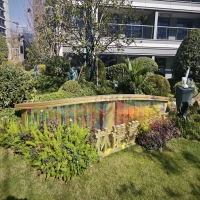Welcome to the website for landscape facilities products and knowledge.
What are the key considerations for designing landscape tables for glacier-adjacent areas?
Designing landscape tables for glacier-adjacent areas requires a unique blend of functionality, durability, and environmental sensitivity. Here are the key considerations to ensure longevity and harmony with these extreme environments:
1. Material Resilience: Opt for cold-resistant, non-corrosive materials like treated hardwoods, stainless steel, or composite polymers that withstand freezing temperatures and glacial meltwater exposure.
2. Eco-Friendly Construction: Prioritize sustainable materials and low-impact installation techniques to minimize disruption to fragile alpine ecosystems. Avoid chemicals that could leach into nearby ice or water sources.
3. Anchoring and Stability: Account for uneven, rocky terrain and potential permafrost shifts. Deep-set foundations or adjustable legs may be necessary to prevent tilting.
4. Aesthetic Integration: Choose designs that complement the stark beauty of glacial landscapes—neutral colors and minimalist forms often work best.
5. Maintenance Accessibility: Ensure tables are easy to repair in remote locations, using modular designs or replaceable components.
By addressing these factors, designers can create tables that endure harsh conditions while preserving the pristine nature of glacier-adjacent wilderness.
Related search:

Recommendation
Metal and acrylic color-changing combined curtain wall for large-scale public landscape facilities